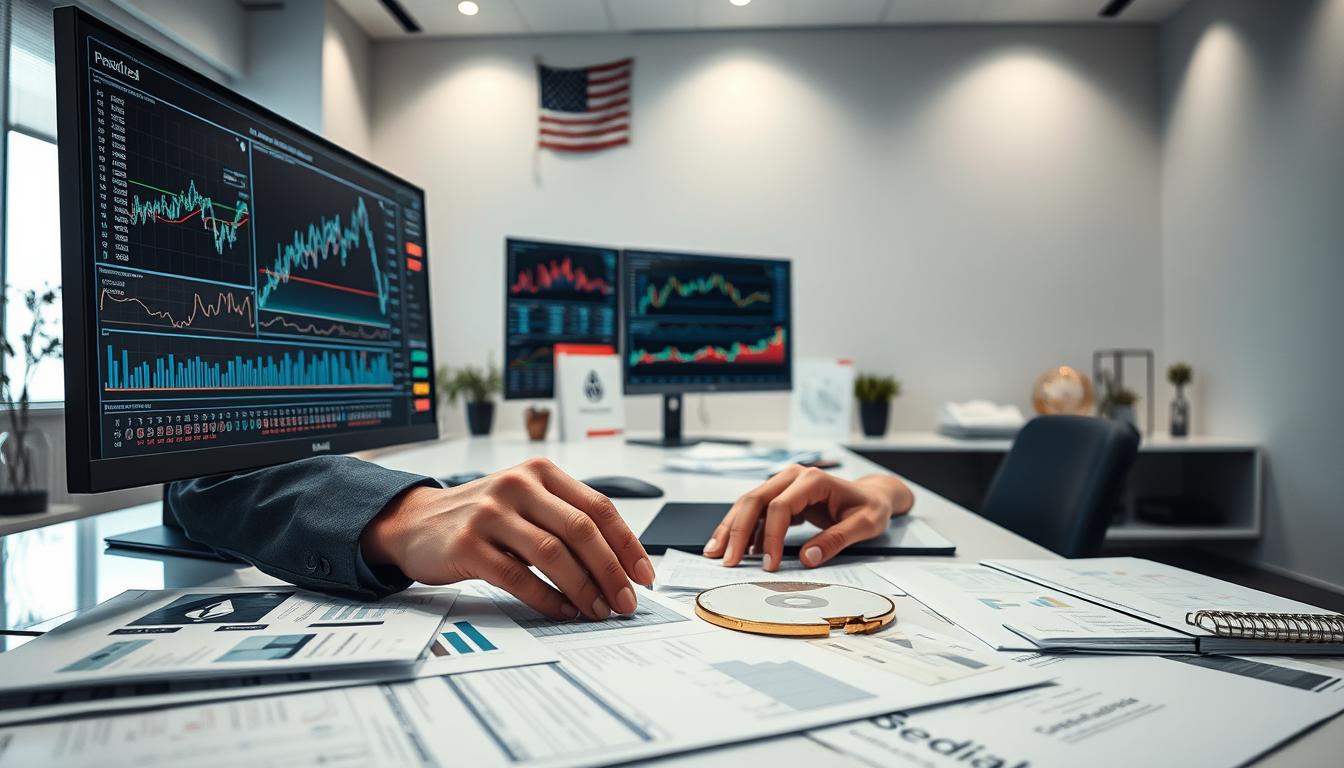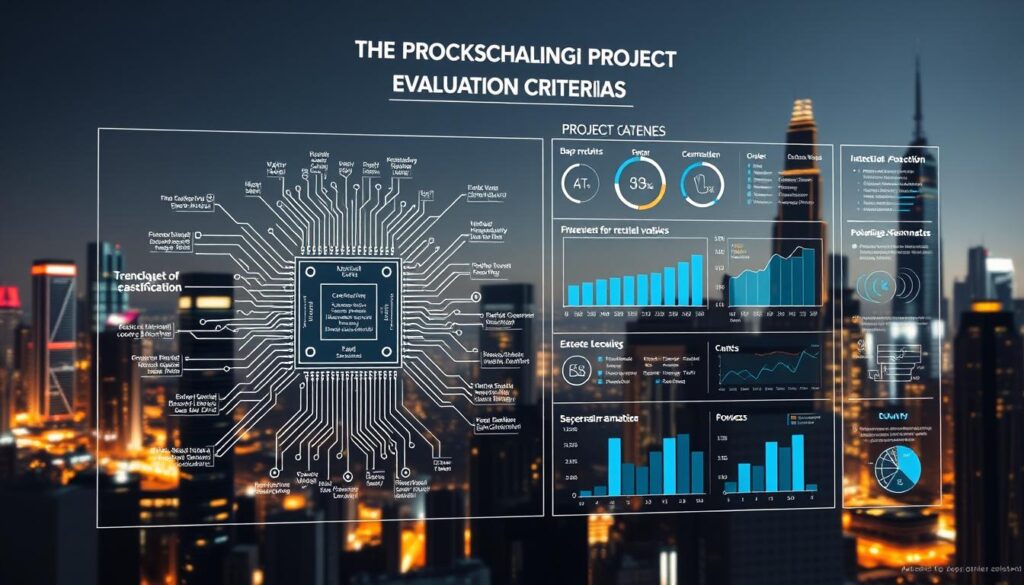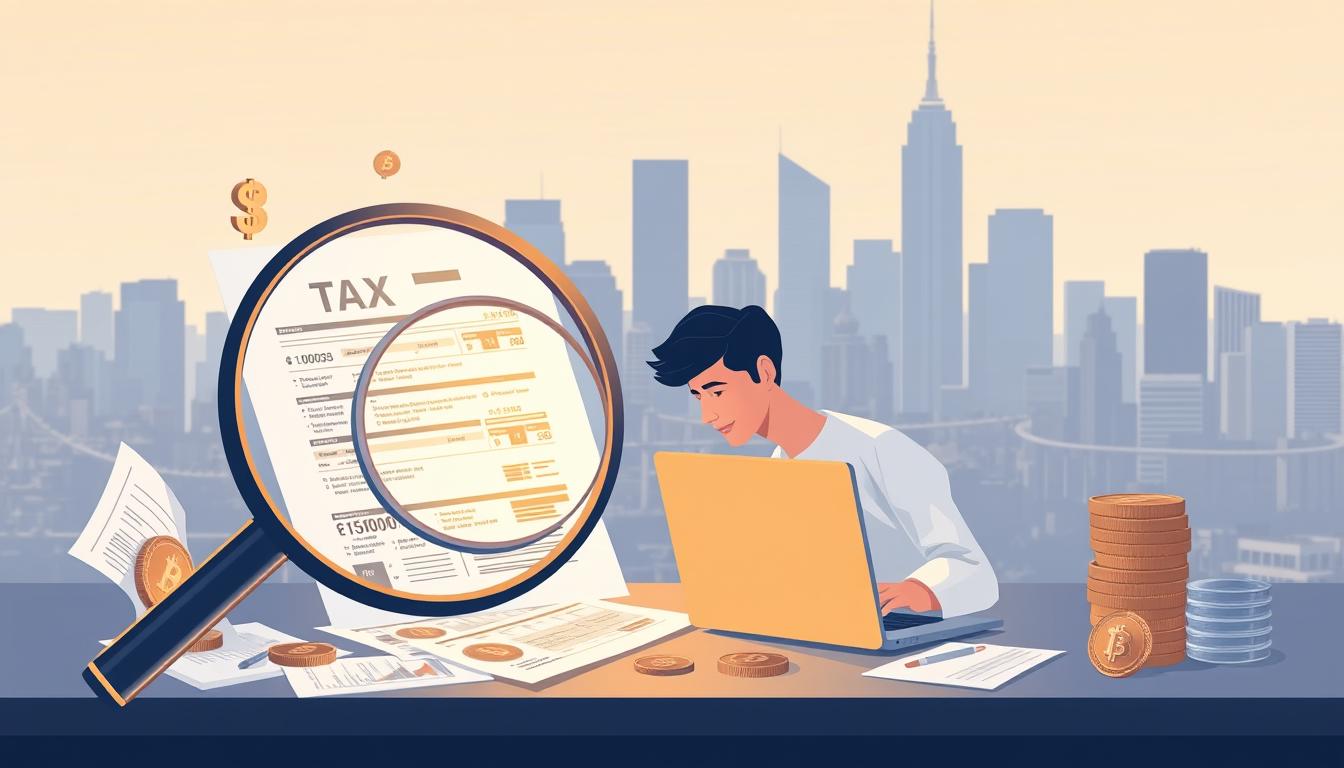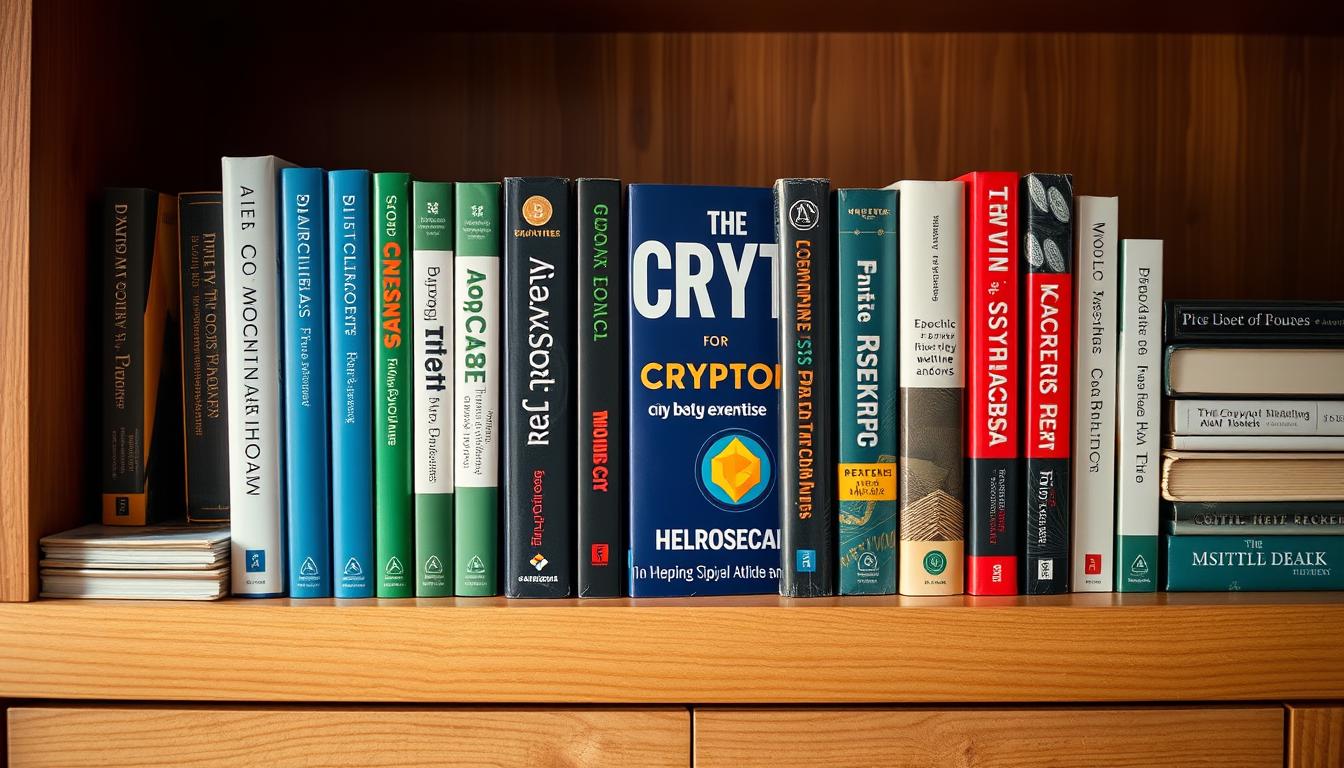Now Reading: How to Evaluate Crypto Projects for American Investors
- 01
How to Evaluate Crypto Projects for American Investors
How to Evaluate Crypto Projects for American Investors

Crypto investing is all about careful evaluation to avoid risks and grab opportunities. For American investors, it’s key to know how to check out crypto projects. This guide covers the important criteria for evaluating projects, including regulatory rules, technical details, and market trends.
It focuses on practical steps to assess projects. This ensures they meet U.S. laws and your financial goals.
Regulations like SEC guidelines and tax rules bring their own set of challenges. This article dives into key areas: team credibility, tokenomics design, and blockchain security. Learning these criteria helps protect your investments from scams and market volatility.
Readers will find out about tools like blockchain explorers and community analysis. These tools help make informed decisions.
Key Takeaways
- Regulatory compliance and risk management are core to crypto project evaluation.
- Team expertise and token utility are vital evaluation criteria.
- U.S. tax implications require careful tracking of crypto investments.
- Technical audits and community engagement reveal project sustainability.
- A personalized evaluation framework adapts to changing market conditions.
Understanding the Cryptocurrency Investment Landscape
The U.S. cryptocurrency market has grown from a small experiment to a $1.5 trillion industry. It now affects millions of investors. For evaluating crypto assets for US investors, knowing this change is crucial. It helps avoid risks and find good opportunities.
Regulatory changes, from SEC lawsuits to stablecoin proposals, have changed how projects work. They also changed how investors interact with them.
The Evolution of Digital Assets in the US Market
Bitcoin’s 2017 rise started the current market. The 2020 DeFi boom brought new protocols like Uniswap and Aave. The 2022 FTX collapse showed the need for quick regulation.
The SEC has been stricter on unregistered tokens. Recent stablecoin reforms set new rules for best practices for assessing crypto projects.
Distinguishing Between Different Types of Crypto Projects
- Cryptocurrencies: Bitcoin, Ethereum—native money or utility networks
- Security tokens: Regulated like stocks (e.g., Securitize platform)
- DeFi protocols: Automated lending/borrowing platforms
- Utility tokens: Network access tools (e.g., Chainlink oracle services)
- NFTs: Digital ownership assets (e.g., Art Blocks collections)
Current State of Crypto Adoption in America
A 2023 Galaxy Digital survey found 20% of U.S. adults own crypto. Institutional investors, like MicroStrategy, hold Bitcoin. Retail investors use apps like Coinbase.
But, 60% of Americans still worry about regulatory uncertainty. This keeps them from investing.
Why Proper Evaluation Matters for American Investors
The cryptocurrency market is very volatile and the rules keep changing. For Americans, skipping the due diligence process for crypto projects can be very costly. Every year, investors lose millions due to bad choices, legal issues, and scams. Doing a thorough check can protect you from these dangers.
Look at what happened with some projects. Those that ignored SEC rules got sued, while those that followed the rules did well. Assessing crypto investments for Americans means checking if they follow the law, if the team is trustworthy, and if the project has a good chance of success. Making choices based on hype, like the Terra collapse in 2022, can be very risky.
- Risk mitigation: Identify red flags like unlicensed securities or unclear roadmaps.
- Regulatory clarity: Projects compliant with IRS reporting rules reduce legal exposure.
- Value discovery: Innovations like DeFi protocols with real user adoption stand out when vetted thoroughly.
Investors often focus too much on quick profits and not enough on long-term success. A careful due diligence process looks for solid facts, not just the excitement of new things. By looking for clear teams, smart token designs, and real uses, Americans can avoid scams. This way, they can feel more confident in the unpredictable world of crypto.
Regulatory Considerations Specific to US-Based Crypto Investors

For how to evaluate crypto projects for American investors, following the law is key. The U.S. has rules that guide which projects can operate here. Projects that don’t follow these rules can put investors at risk.
- SEC Compliance – The SEC says some tokens are like stocks. Projects like Ripple’s XRP case show the dangers. Check legal considerations for signs of trouble.
- Tax Obligations – The IRS sees crypto as property. Every trade must be reported. Use crypto tax software to track evaluating blockchain projects for investment and their taxes.
- State Laws – Laws vary by state. New York has strict rules, Wyoming is more open, and California has its own rules. Projects working across states need to check their laws.
- KYC/AML Checks – Exchanges ask for ID. Without proper checks, platforms might shut down. This limits access to some projects.
Investors should check projects against U.S. laws. Projects not following SEC rules or state laws face big risks. Always choose projects that follow the law to avoid legal trouble.
Essential Tools for Conducting Crypto Project Research
Effective crypto project analysis techniques need special tools to check if a project is real and promising. Start with blockchain explorers like Etherscan, BscScan, or Solscan. These sites show transaction histories, wallet info, and smart contract code. For instance, looking at token distribution can spot any odd centralization.
Analytics platforms like Glassnode and Nansen give data on network use and holder activity. This helps investors see if a project is widely adopted.
Community involvement is key in cryptocurrency project evaluation criteria. Watch Reddit, Discord, and Twitter for developer and user feedback. GitHub tracks code changes, and social listening tools spot market trends. But, beware of fake buzz from paid ads.
- Blockchain Explorers: Check on-chain transactions and contract audits.
- Analytics Platforms: Look at active addresses and token velocity.
- Rating Services: CoinGecko and CoinMarketCap offer rankings, but be careful—compare them with on-chain data.
Rating services give quick views but have limits. Some focus on partnerships over fairness. Always check direct data from explorers and community feedback. Using all these tools gives a full picture, not just one view.
How to Evaluate Crypto Projects for American Investors: A Step-by-Step Approach
Learning the due diligence process for crypto projects is key. American investors need a clear plan to find good deals and avoid risks. Here are the first steps:
- Screen Basics: Make sure the project is real. Check if the team is open and if the platform is registered with the SEC. Look at token listings on trusted sites like Coinbase or Binance US.
- Analyze Documentation: Read the whitepaper to see if it solves real problems and is technically sound. For open-source projects, check GitHub for code.
- Assess Market Fit: Compare the project to others. Use CoinMarketCap or CoinGecko to see market cap, trading volume, and community growth.
- Regulatory Check: Make sure it follows state and federal laws. Check IRS tax rules and AML policies.
- Technical Audit: Look at blockchain security, speed, and how it scales. Use Etherscan for smart contract checks.
- Risk Profiling: Match your findings with your investment goals. High-risk projects might be for traders, while stable ones are better for long-term investors.
Keep a checklist for each step. Use free templates from CryptoCompare or Binance Academy to track your progress. Update your evaluations as rules and projects change. The how to evaluate crypto projects for American investors process gets better with practice.
Use this framework to focus on transparency, innovation, and following the law. Skipping any step can lead to missing important details that affect profits and legal safety.
Analyzing the Project’s Whitepaper and Documentation
Starting a crypto project analysis means looking at key documents. Investors in America should carefully read whitepapers and technical details. This ensures they don’t fall for exaggerated promises. Here are important steps to do your homework right for evaluating blockchain projects.
Red Flags to Watch For in Technical Documentation
Be on the lookout for these warning signs in whitepapers:
- Vague descriptions of core technology or algorithms
- Unrealistic timelines or performance metrics
- Plagiarized sections copied from other projects
- Missing details about token supply, governance, or legal compliance
Terms like “revolutionary tech” without details are a red flag. Compare this to Bitcoin’s clear whitepaper. Bitcoin’s whitepaper is detailed, unlike many “next-gen” projects that are vague.
Evaluating Problem-Solution Fit
Check if the project solves a real-world problem. Ask yourself:
- Does the problem affect a measurable market segment?
- Are existing solutions inferior in cost or efficiency?
- Can adoption realistically grow in US regulatory environments?
Ethereum’s smart contracts were a real solution for developers. But many DeFi projects just copied without adding anything new. Use SWOT analysis to compare with competitors.
Assessing Technical Feasibility and Innovation
Verify technical claims by:
- Reviewing code repositories on platforms like GitHub
- Checking third-party audits for security flaws
- Assessing scalability plans against current network limits
Projects like Cardano showed they could follow through on their plans. But many 2017 ICOs failed to deliver. Ask if the project’s innovations build on Ethereum’s smart contracts or just offer the same thing without adding anything new.
Examining the Team Behind the Project
When investing in crypto, it’s key to look at the team behind it. A good team means the project will get done right, stay fresh, and be accountable. First, check each team member’s work history. Look up their LinkedIn profiles to see if they’ve worked in blockchain or related fields.
Also, check their GitHub activity to see if their coding matches what they say on their resume.
- Verify credentials: Use platforms like Crunchbase or academic databases to confirm degrees and employment histories.
- Assess expertise: Look for technical leaders with blockchain experience and business managers familiar with US regulatory landscapes.
- Review track records: Analyze past projects led by team members. Failed ventures or delayed launches signal risks.
Watch out for red flags like teams with no public code, roles that overlap, or advisors who don’t talk to the community. Teams without names can be a legal issue for US investors. Make sure they follow SEC rules for clear information. Look at what people say on Reddit or Twitter about the team’s trustworthiness.
Good crypto projects have teams with the right mix of skills. For example, a DeFi project needs smart contract coders and experts in US finance laws. Don’t invest in projects where advisors just show up to lend their names.
What people say on Discord can tell you a lot about a team’s trustworthiness. For Americans, a team that’s open and proven can help avoid scams and legal trouble.
Tokenomics Assessment Framework
Smart investors look for criteria for evaluating digital token projects that promise lasting value. A solid tokenomics framework checks if token design fits real-world use and follows rules.
Token Distribution and Vesting Schedules
Look into how tokens are given out at the start. Fair launches give tokens without giving founders an unfair edge. Teams with less than 10% of tokens show they care about the community.
Vesting schedules longer than 12 months help avoid sudden sales.
- Verify team/investor holdings don’t exceed 20% of total supply
- Track vesting cliffs and linear release timelines
- Compare community token ownership percentages to industry benchmarks
Inflation Models and Supply Mechanics
How tokens are made affects their long-term value. Tokens like Bitcoin have a fixed supply, unlike those that grow. Burning tokens can help keep their value stable.
- Calculate annual inflation rates using circulating supply vs. issuance data
- Scrutinize emission schedules tied to network usage metrics
- Flag projects with unlimited supply lacking deflationary safeguards
Token Utility and Value Capture
Utility shows how tokens are used in real life, not just for speculation. Governance tokens should influence decisions, while utility tokens should work on platforms.
Features like transaction fees or staking rewards show a token’s worth.
- Assess if token use cases align with project roadmap milestones
- Check if utility functions comply with SEC’s Howey Test guidelines
- Compare governance token voting power distribution fairness
Technical Evaluation Criteria for Blockchain Projects
Technical details are key to a blockchain’s reliability and future. To analyze crypto projects well, focus on three main areas: consensus systems, scalability, and development activity. Here’s how to identify strengths and risks without needing technical knowledge.

Consensus Mechanisms and Security Models
First, examine how transactions are verified. Proof of Work (PoW) uses mining but wastes a lot of energy. On the other hand, Proof of Stake (PoS) saves energy but might lead to centralization. Look for projects with clear security audits and active bug bounty programs.
Those with frequent hacks or no public audits should be avoided.
Scalability Solutions and Performance Metrics
Scalability is crucial for real-world use. Layer 1 networks change core protocols (like Ethereum’s move to PoS). Layer 2 solutions, such as Optimism, build on existing chains.
Compare metrics like transactions per second (TPS), finality time, and gas fees. Ethereum handles about 15 TPS, while Solana claims 50,000 TPS but had major outages in 2022. Choose networks that balance speed and stability well.
Code Quality and Development Activity
Check public code repositories like GitHub. Healthy projects show steady commit activity, many contributors, and regular updates. Red flags include projects copying code without improvements or repos with months of inactivity.
Third-party audits and community reports show if a project is maintained or just a repackaged fork.
Regulatory changes require adaptability. Look for modular designs that allow upgrades without hard forks. Projects with backward compatibility and interoperability features are better in changing US regulations. Avoid clones with no original development—sustainable projects invest in long-term technical growth.
Community and Market Analysis
For American investors, looking at crypto projects means checking community strength and market position. How to evaluate crypto projects for American investors goes beyond tech specs. It’s about user engagement and the health of the ecosystem.
Start by checking out social platforms like Discord and Twitter. Look for real conversations, not just numbers. Use blockchain analytics platforms to spot true activity from bots.
- Community Quality: Focus on projects where users discuss tech updates or governance.
- Developer Activity: Watch GitHub contributions and third-party integrations for real-world use.
- Market Fit: Compare rivals by daily active users or transaction volumes.
When evaluating crypto assets for US investors, also look at market resilience. Healthy communities stay strong even when prices drop, like Ethereum’s support during bear markets. Stay away from partnerships that seem too good to be true without real products.
Use platforms like CoinMarketCap to track market share, but also look at qualitative signs. A strong community and a clear market niche can reduce risk. Investors should mix numbers with insights like team openness and regulatory efforts.
Risk Management Strategies for US Crypto Investors
Americans in the crypto market need strong risk management to keep their money safe. Best practices for assessing crypto projects should match each person’s risk level and follow the law. Here’s how to make a solid plan:
Portfolio Diversification Techniques
- Spread your investments by putting 5-15% in high-risk assets like DeFi tokens
- Balance your investments between well-known networks (Bitcoin, Ethereum) and new layer-2 solutions
- Use tools to check how your investments relate to each other and avoid overlap with stocks
Security Best Practices
Use hardware wallets like Ledger or Trezor for 90%+ of your assets. Multi-signature setups help avoid single failures. Choose exchanges that follow SEC rules—Coinbase and Binance.US have USD accounts insured by FDIC. For DeFi, check smart contracts on platforms like Certik before investing.
Managing Volatility and Market Cycles
- Use dollar-cost averaging over 6-12 months to lower entry risks
- Set trailing stop-loss orders at 20-30% below the purchase price for volatile assets
- Rebalance your portfolio every quarter to keep your target mix—tax-loss harvesting during downturns can help offset gains
Adjust your strategies as SEC rules change. Keep up with IRS crypto tax updates each year to stay legal and protect your money in bear markets.
Comparing Centralized vs. Decentralized Projects

When evaluating blockchain projects for investment, knowing about governance is crucial. Centralized projects depend on a core team or foundation. On the other hand, decentralized projects let token holders decide on changes. This criteria for evaluating digital token projects should look at how decisions affect risk and control.
Governance Models and Decision-Making
Centralized systems are quicker but can fail at one point. Bitcoin uses on-chain voting for a decentralized model. Solana, however, centralizes protocol changes. Hybrid models, like Ethereum, mix team leadership with community input. It’s important to see if governance matches the project’s goals. Also, consider how SEC scrutiny might impact centralized models.
- On-chain voting: Transparent but slow (e.g., DAO proposals)
- Off-chain governance: Faster but less inclusive (e.g., project foundation decisions)
- Hybrid: Blends efficiency and community input
Assessing Decentralization Claims
Projects often highlight decentralization as a benefit. Look at token distribution: if a few hold most, it’s not truly decentralized. Check if developers often override community votes. The SEC views overly centralized projects as securities, which is risky for U.S. investors.
Compare projects like Tezos (decentralized on-chain governance) versus Binance Smart Chain (centralized upgrades). Ask: Does the roadmap show steps to reduce centralization? Good projects balance speed with accountability.
Real-World Adoption and Partnerships
When looking at crypto assets for US investors, it’s key to check real-world use and partnerships. Good projects have clear, measurable success, not just empty promises. Look at how a project fits into daily life using crypto project analysis.
- Transaction volume and daily active users
- Total value locked (TVL) for DeFi platforms
- Developer activity and code updates
- Enterprise partnerships with verifiable integrations
Partnerships are important, but quality is more crucial than quantity. Make sure to verify claims by checking:
- Official product launches, not just press releases
- On-chain data showing user engagement
- Third-party audits confirming integration timelines
Bitcoin’s growth as a payment option is a good example. It contrasts with projects like EOS, which promised too much without delivering. For US investors, check if a project fits with local finance and laws. Use tools like Etherscan or CoinMetrics to see real adoption levels.
When evaluating crypto assets for US investors, balance current use with future potential. Focus on projects with steady user growth and real partnerships. Stay away from fake metrics or short-term hype. True success comes from real-world use, not just promises.
Investor Psychology and Avoiding Common Pitfalls
Emotional decisions can cost investors a lot. For Americans in crypto markets, knowing about psychological traps is as important as understanding the tech. Feelings like fear of missing out (FOMO) and following the crowd often lead to bad choices. These feelings can ignore the due diligence process for crypto projects.
Recognizing FOMO and Market Manipulation
Pump-and-dump schemes use hype to their advantage. U.S. investors need to watch out for social media hype and paid ads. Look out for sudden price increases without any updates. Tools like assessing crypto investments for Americans help by checking trading volume and team transparency. Ask yourself: Is this rally based on solid reasons?
Developing a Rational Investment Thesis
Create a thesis before investing. Outline the following:
- What problem the project solves
- How it compares to Bitcoin and Ethereum
- Key adoption milestones
- When to sell based on your goals
Keep this in a crypto journal for when markets get wild.
Managing Confirmation Bias
Seek out different opinions. Join forums that question your investments. Use platforms like Reddit’s r/CryptoCurrency to see other views. Set aside time each week to review your ideas against new information. Stay away from social media echo chambers.
U.S. investors face special challenges from unclear rules. Keep your focus by regularly checking your thesis and tracking important metrics like developer activity and real-world use.
Building Your Personal Crypto Evaluation Framework for Long-Term Success
Every crypto investment starts with a clear plan. Use criteria like technical feasibility, team credibility, and regulatory alignment to make a checklist. Choose what’s important to you, like innovation, security, or market adoption.
Start with key factors like tokenomics, community engagement, and SEC compliance. Develop a scorecard to rate each criterion. Give more points to projects with clear plans or strong partnerships.
Track metrics like developer activity and trading volume. Also, look at qualitative factors like governance models. Update your framework often to keep up with market and regulatory changes.
Set limits based on your risk comfort. Know your red flags, like unclear whitepapers or centralized control. Use blockchain explorers and SEC filings to check claims. Keep your process fresh with new data, like tax rules or security audits.
A disciplined approach turns uncertainty into strategy. By tailoring your evaluation to your priorities and local laws, you can lower risks. Stay updated with whitepapers, developer updates, and legal alerts. Success comes from using your tailored criteria in a changing market.
FAQ
What criteria should American investors use when evaluating a cryptocurrency project?
American investors should look at several important factors. These include the project’s team, technology, and use case. They should also consider tokenomics, regulatory compliance, community engagement, and market adoption. Each factor is key to judging the project’s success.
How can investors conduct due diligence on crypto projects?
Investors can start by using a structured framework for evaluation. They should check the project’s whitepaper and look at the team’s background. It’s also important to assess market fit, technology, and legal compliance.
Tools like blockchain explorers and community forums offer more insights. These resources help investors understand the project better.
What are the regulatory considerations American investors must keep in mind?
American investors need to know about SEC, IRS, and state regulations. They should understand which tokens are considered securities. They also need to know about tax laws and KYC/AML rules.
Investors should be careful of projects that ignore these rules. Such projects can be riskier.
How does tokenomics affect investment decisions?
Tokenomics looks at how tokens are distributed and used. A good tokenomics design can show how a token’s value might grow. It also shows how the token encourages user involvement and decision-making.
What tools can American investors use to research cryptocurrency projects?
Investors have many tools at their disposal. They can use blockchain explorers like Etherscan and analytics platforms like Glassnode. Crypto rating services like CoinMarketCap are also helpful.
Community forums and social media are great for getting opinions on a project.
What are some common red flags to watch for in crypto projects?
Red flags include vague project descriptions and anonymous teams. Be cautious of unrealistic promises and unclear tokenomics. Also, watch out for projects that exaggerate partnerships without proof.
How can American investors manage risks associated with cryptocurrency investing?
Risk management involves diversifying your portfolio and setting stop-loss strategies. Using hardware wallets for security is also important. Understanding market cycles and setting personal investment rules can help you deal with volatility.
How can community strength influence a crypto project’s success?
A strong community is vital. It shows user engagement and loyalty. A supportive community can help a project during tough times. It can also advocate for the project, making it more viable in the long run.















